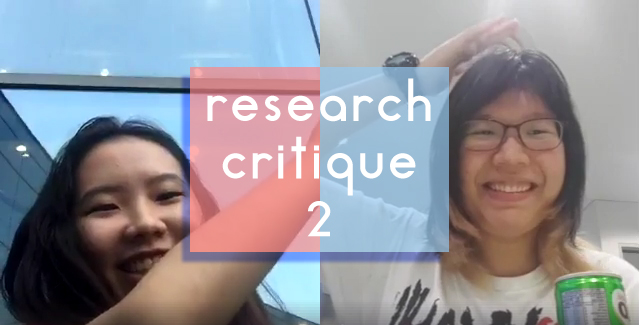Link:
https://www.facebook.com/amanda.oh.5283/videos/1996232647296283/
“Gradually they realised that they could arrange to telematically meet friends and relatives living on the opposite coast. Eventually, whole families would meet their distant loved ones through the ‘Hole’, some of whom had not seen each other for several years.”
— Maria Chatzichristodoulou, about the ‘Hole-in-Space’
What is the third space to you?
To me, the third space would be to share a moment with someone, even if we were not in the same physical space. It is the idea of being on a virtualised platform, and to sit together to eat and talk and basically become associated with one another, or possibly reconnect with someone else, as mentioned in the quote above.
How do we collapse boundaries in the third space?
In our tele-drift project, Amanda and I shared a drink despite being in a totally different location, and crossed boundaries to “physically” show our emotions. We were communicating verbally through the third space, but adding the physical factor of reaching out to each other, literally. This was what collapsed the boundaries, similar to how “Hole-in-Space” connected old friends and families. Our willingness to share with one another what we normally could not (given the distance): touch and the act of sharing at the same moment, rather than sending a can of milo through mail.
How do we create closeness and intimacy in the third space despite being in different locations?
“But most startling is the fact that the third space is simply an integral fact of everyday life in the 21st century.”
— Randall Packer, The Third Space
With reference to the quote, to me, closeness would be the normalcy of everyday life. The fact that someone was able to share with me a very normal task despite being in a different location was a very intimate moment for me. It felt like the two of us were in close proximity and that we were not actually that far apart, and considering that we were so fascinated with the idea of being able to share made the experience all the more refreshing – like an exciting new touch to a typically mundane activity.
How did you virtually touch, hold objects, create a “third” body using different gestures despite being in different locations?
While holding a conversation, we would use our own body parts to represent the other’s while acting out what was requested of us. Likewise with the milo can, Amanda and I used our own hands to hold onto a can of milo and despite them being different milo cans, it still felt like “sharing”, when we passed it to each other and drank it, often asking if the other wanted a sip.
How did you “connect” and collaborate with one another remotely in this third space?
It gave the illusion that we were sitting right next to each other, or in front of each other. It felt like we were truly communicating what each of us wanted from the conversation, and in order to achieve a certain goal, we collaborated in a way we might not have done so easily in a normal, physical space.
“When we can no longer separate the real and the virtual (the post real), when the third space is just the way things are, well, that in sum is the current state of evolution.”
— Randall Packer, The Third Space
The idea that we were able to create that illusion was like, a peek into the realisation that the real and virtual could end up seeming inseparable, and while daunting, could bring across new possibilities in business opportunities, and more importantly, intimacy — something that seemed to have been lost after social media took over our lives.

Recent Comments